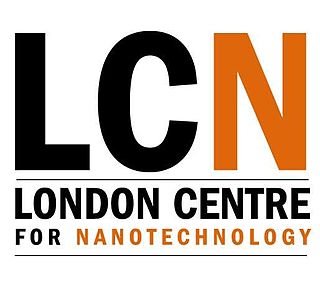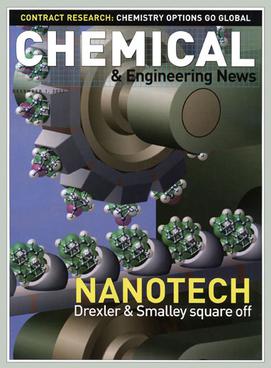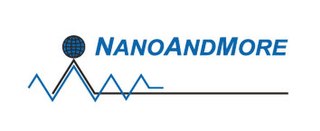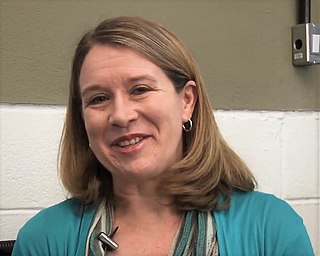The Foresight Institute (Foresight) is a San Francisco-based research non-profit that promotes the development of nanotechnology and other emerging technologies, such as safe AGI, biotech and longevity.

Nanotechnology, often shortened to nanotech, is the use of matter on atomic, molecular, and supramolecular scales for industrial purposes. The earliest, widespread description of nanotechnology referred to the particular technological goal of precisely manipulating atoms and molecules for fabrication of macroscale products, also now referred to as molecular nanotechnology. A more generalized description of nanotechnology was subsequently established by the National Nanotechnology Initiative, which defined nanotechnology as the manipulation of matter with at least one dimension sized from 1 to 100 nanometers (nm). This definition reflects the fact that quantum mechanical effects are important at this quantum-realm scale, and so the definition shifted from a particular technological goal to a research category inclusive of all types of research and technologies that deal with the special properties of matter which occur below the given size threshold. It is therefore common to see the plural form "nanotechnologies" as well as "nanoscale technologies" to refer to the broad range of research and applications whose common trait is size.
Nanoengineering is the practice of engineering on the nanoscale. It derives its name from the nanometre, a unit of measurement equalling one billionth of a meter.
The history of nanotechnology traces the development of the concepts and experimental work falling under the broad category of nanotechnology. Although nanotechnology is a relatively recent development in scientific research, the development of its central concepts happened over a longer period of time. The emergence of nanotechnology in the 1980s was caused by the convergence of experimental advances such as the invention of the scanning tunneling microscope in 1981 and the discovery of fullerenes in 1985, with the elucidation and popularization of a conceptual framework for the goals of nanotechnology beginning with the 1986 publication of the book Engines of Creation. The field was subject to growing public awareness and controversy in the early 2000s, with prominent debates about both its potential implications as well as the feasibility of the applications envisioned by advocates of molecular nanotechnology, and with governments moving to promote and fund research into nanotechnology. The early 2000s also saw the beginnings of commercial applications of nanotechnology, although these were limited to bulk applications of nanomaterials rather than the transformative applications envisioned by the field.
Nanotechnology is impacting the field of consumer goods, several products that incorporate nanomaterials are already in a variety of items; many of which people do not even realize contain nanoparticles, products with novel functions ranging from easy-to-clean to scratch-resistant. Examples of that car bumpers are made lighter, clothing is more stain repellant, sunscreen is more radiation resistant, synthetic bones are stronger, cell phone screens are lighter weight, glass packaging for drinks leads to a longer shelf-life, and balls for various sports are made more durable. Using nanotech, in the mid-term modern textiles will become "smart", through embedded "wearable electronics", such novel products have also a promising potential especially in the field of cosmetics, and has numerous potential applications in heavy industry. Nanotechnology is predicted to be a main driver of technology and business in this century and holds the promise of higher performance materials, intelligent systems and new production methods with significant impact for all aspects of society.

The London Centre for Nanotechnology is a multidisciplinary research centre in physical and biomedical nanotechnology in London, United Kingdom. It brings together three institutions that are world leaders in nanotechnology, University College London, Imperial College London and King's College London. It was conceived from the outset with a management structure allowing for a clear focus on exploitation and commercialisation. Although based at UCL's campus in Bloomsbury, the LCN includes research in departments of Imperial's South Kensington campus and in King's Strand campus.
The impact of nanotechnology extends from its medical, ethical, mental, legal and environmental applications, to fields such as engineering, biology, chemistry, computing, materials science, and communications.
The Feynman Prize in Nanotechnology is an award given by the Foresight Institute for significant advances in nanotechnology. Two prizes are awarded annually, in the categories of experimental and theoretical work. There is also a separate challenge award for making a nanoscale robotic arm and 8-bit adder.

Thalappil Pradeep is an institute professor and professor of chemistry in the Department of Chemistry at the Indian Institute of Technology Madras. He is also the Deepak Parekh Chair Professor. In 2020 he received the Padma Shri award for his distinguished work in the field of Science and Technology. He has received the Nikkei Asia Prize (2020), The World Academy of Sciences (TWAS) prize (2018), and the Shanti Swarup Bhatnagar Prize for Science and Technology in 2008 by Council of Scientific and Industrial Research.
Green nanotechnology refers to the use of nanotechnology to enhance the environmental sustainability of processes producing negative externalities. It also refers to the use of the products of nanotechnology to enhance sustainability. It includes making green nano-products and using nano-products in support of sustainability.
Because of the ongoing controversy on the implications of nanotechnology, there is significant debate concerning whether nanotechnology or nanotechnology-based products merit special government regulation. This mainly relates to when to assess new substances prior to their release into the market, community and environment.
The societal impact of nanotechnology are the potential benefits and challenges that the introduction of novel nanotechnological devices and materials may hold for society and human interaction. The term is sometimes expanded to also include nanotechnology's health and environmental impact, but this article will only consider the social and political impact of nanotechnology.
Amanda Susan Barnard is an Australian theoretical physicist working in predicting the real world behavior of nanoparticles using analytical models and supercomputer simulations and applied machine learning. Barnard is a pioneer in the thermodynamic cartography of nanomaterials, creating nanoscale phase diagrams relevant to different environmental conditions, and relating these to structure/property maps. Her current research involves developing and applying statistical methods and machine/deep learning in nanoscience and nanotechnology, and materials and molecular informatics. In 2014 she became the first person in the southern hemisphere, and the first woman, to win the Feynman Prize in Nanotechnology, which she won for her work on diamond nanoparticles.
The Center for Nanotechnology in Society at the University of California at Santa Barbara (CNS-UCSB) is funded by the National Science Foundation and "serves as a national research and education center, a network hub among researchers and educators concerned with societal issues concerning nanotechnologies, and a resource base for studying these issues in the US and abroad." The CNS-UCSB began its operations in January 2006.

The Drexler–Smalley debate on molecular nanotechnology was a public dispute between K. Eric Drexler, the originator of the conceptual basis of molecular nanotechnology, and Richard Smalley, a recipient of the 1996 Nobel prize in Chemistry for the discovery of the nanomaterial buckminsterfullerene. The dispute was about the feasibility of constructing molecular assemblers, which are molecular machines which could robotically assemble molecular materials and devices by manipulating individual atoms or molecules. The concept of molecular assemblers was central to Drexler's conception of molecular nanotechnology, but Smalley argued that fundamental physical principles would prevent them from ever being possible. The two also traded accusations that the other's conception of nanotechnology was harmful to public perception of the field and threatened continued public support for nanotechnology research.

NanoAndMore is a distributor for AFM cantilevers from NanoWorld, Nanosensors, BudgetSensors, MikroMasch, Opus and nanotools, calibration standards and other products for nanotechnology.

The Nanobusiness Commercialization Association (NanoBCA) is a 501(c)(6) non-profit trade organization dedicated to creating a friendly political environment that nurtures research and innovation in nanotechnology, promotes tech-transfer of nanotechnologies from academia to industry, encourages private capital investments in nanotechnology companies, and helps its company members bringing nanotechnology products to the market. Founded in 2001, NanoBCA is the world's first nonprofit association focused on the commercialization of nanotechnologies. Since its establishment, NanoBCA has been advocating for the continued allocation of significant funds per the National Nanotechnology Initiative (NNI). NanoBCA dedicated work in shaping national nanotechnology policy has created a favorable policy climate for nanotechnology at every level, benefiting academic research, small businesses, and the manufacturing industry. NanoBCA has been advocating Congress to ensure the continuous allocation of government funds to nanotechnology, such as basic research and SBIR grants, throughout all the major government agencies (DOD, DOE, NFS, NIH, etc.).
John Michael Ramsey is an American analytical chemist at the University of North Carolina at Chapel Hill. He currently holds the position of Minnie N. Goldby Distinguished Professor of Chemistry. His current research with the university focuses on microscale and nanoscale devices such as microchip electrospray, microscale Ion trap mass spectrometers, and microfluidic point of care devices. He is ranked #2 in the "Giants of Nano" field on The Analytical Scientist Power List.

Christy Lynn Haynes is a chemist at the University of Minnesota. She works at the interface of analytical, biological, and nanomaterials chemistry.






